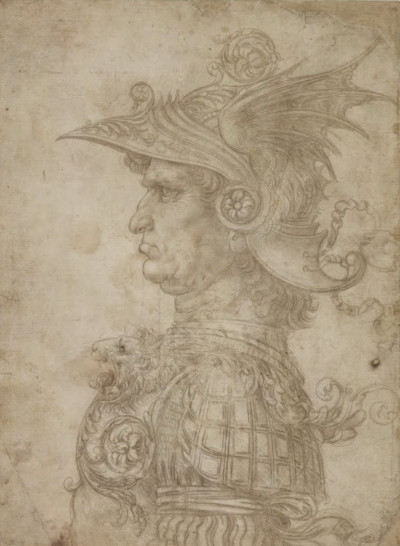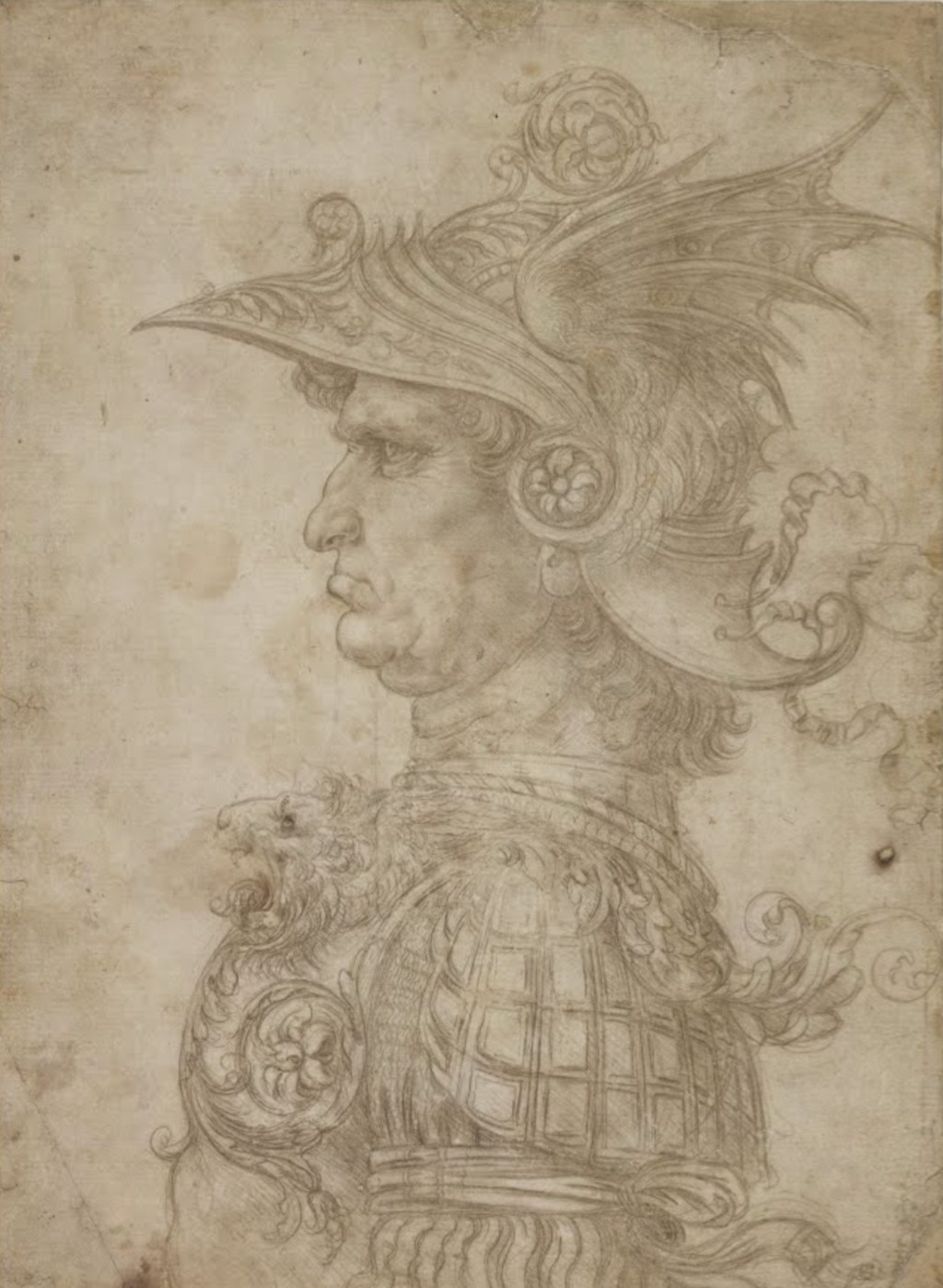 Buy Art Prints Now
Buy Art Prints Nowfrom Amazon
* As an Amazon Associate, and partner with Google Adsense and Ezoic, I earn from qualifying purchases.
This attractive drawing is titled Profile of an Ancient Captain and was completed by Renaissance master, Leonardo da Vinci, in around 1475/1480, whilst still a relatively young man.
Introduction
This drawing, also sometimes known as Bust of a warrior in profile, remains a part of the permanent collection of the British Museum in London, UK. This institution holds an impressive and varied collection which covers most major civilisations dating back thousands of years. Art is just one aspect of their display, and the fame of Da Vinci makes this an important addition.
Profile of an Ancient Captain may have been a copy of the master's drawings of several different leaders of the past. He worked in silverpoint, and Da Vinci made use of this medium throughout much of the early period of his career, before later choosing chalk and pen and ink instead.
The artist would have been in his twenties at the time that he produced this piece and influence on him from Verrocchio was still particularly strong at this stage. His use of silverpoint within his apprenticeship helped him to learn the importance of precision and discipline as a draughtsman.
Several experts at the British Museum have fairly recently run their eyes over this piece, and confirmed its attribution to Leonardo in time for a major exhibition. The item has also been traced back to the early 19th century through a procession of UK-based collectors, but information on the piece before that is limited.
Interest in Da Vinci's drawings has increased dramatically over the past century or so, and today we consider the artist in a much more rounded manner than previously was the case. Initially, he was seen only as a painter, but we can now enjoy all aspects of his achievements, which spread into invention, drawing, science and mathematics.
A number of reliefs from Verrocchio's career have been uncovered which point directly to the influences on this particular drawing. The master captured Greek and Persian leaders of the past and was interested in military clothing, as can be seen in Profile of an Ancient Captain.
This article delivers just as much detail as we could find on this specific artwork, including where the piece resides today. We discuss the qualities and techniques of this drawing, and where it fits into the artist's career overall. We also touch on other genres in which Da Vinci worked as a highly skilled draughtsman.
Table of Contents
Influences
It is likely that Leonardo's Profile of an Ancient Captain was heavily influenced by his master, Andrea del Verrocchio. He served as an apprentice for a number of years within Verrocchio's studio and continued to collaborate with him even after setting up in a studio of his own.
We know that his master produced depictions of Alexander the Great and Darius, the Persian king, and it is likely that Da Vinci's version here may have been his own copy of one of those. He worked, understandably, in a manner similar to his master's studio in his early period, before later branching out and adding his own innovations later on.
Description
A warrior, captured in bust format, is featured in side profile, looking off to our left. This detailed sketch captures a winged helmet, with Leonardo also creating some memorable lion heads on the breastplate and armoured lapels. The model holds a stern expression, perhaps representing the importance of his rank or the environment in which he is at work.
Historians will learn much from this drawing about military design from that period, and it was rare for an artist to capture a soldier close up in this manner. Typically, they would be shown in scenes of victory or leadership, perhaps on the battle field, or amongst their men.
The artist is known to have made use of curly hair in a number of his portraits, and incorporates elements of that style here too, with the captain's hair sprouting out from underneath his helmet on the back of his neck. The term of ancient in the title underlines that Da Vinci was not depicting a soldier of his period, but from previous centuries and perhaps he had studied historical publications in order to be as accurate as possible.
Location
The drawing remains in the collection of the British Museum, which is based in central London, UK. Profile of an Ancient Captain was acquired by the museum in 1895, from Col John Wingfield Malcolm also known as John Malcolm of Poltalloch. It resides today within the British Museum's Prints and Drawings section, which includes a number of other highly prestigious items.
Provenance
Prior to Col John Wingfield Malcolm, the drawing is believed to have been owned by William Young Ottley, Sir Thomas Lawrence and finally Sir John Charles Robinson. This takes us back to the early 19th century, but little documentation is available on the item's ownership prior to that.
Size and Medium
Leonardo da Vinci's Profile of an Ancient Captain was produced using silverpoint and measures 287 mm in height, by 211 mm in width. The artist used cream prepared paper. Most of the artist's drawings would be in this small size, indeed a number would have been produced on larger sheets of paper, before then being cropped out and displayed independently.
Large Image of Profile of an Ancient Captain
Below is a larger image, enabling you to see a little more of the detail included by the artist all those centuries ago. Leonardo was a subtle, precise artist whose qualities cannot always be appreciated from smaller images. He worked hard on his craft throughout his lifetime, mastering a variety of different mediums and drawing technqiues.
References
- Leonardo. The Complete Paintings and Drawings, Frank Zöllner & Johannes Nathan, Taschen
- Leonardo da Vinci, Walter Isaacson




